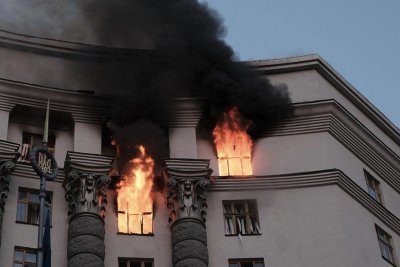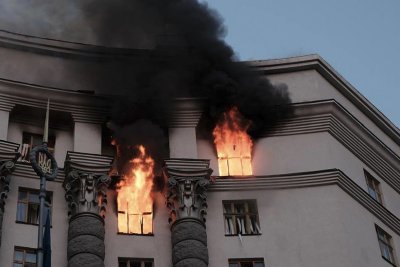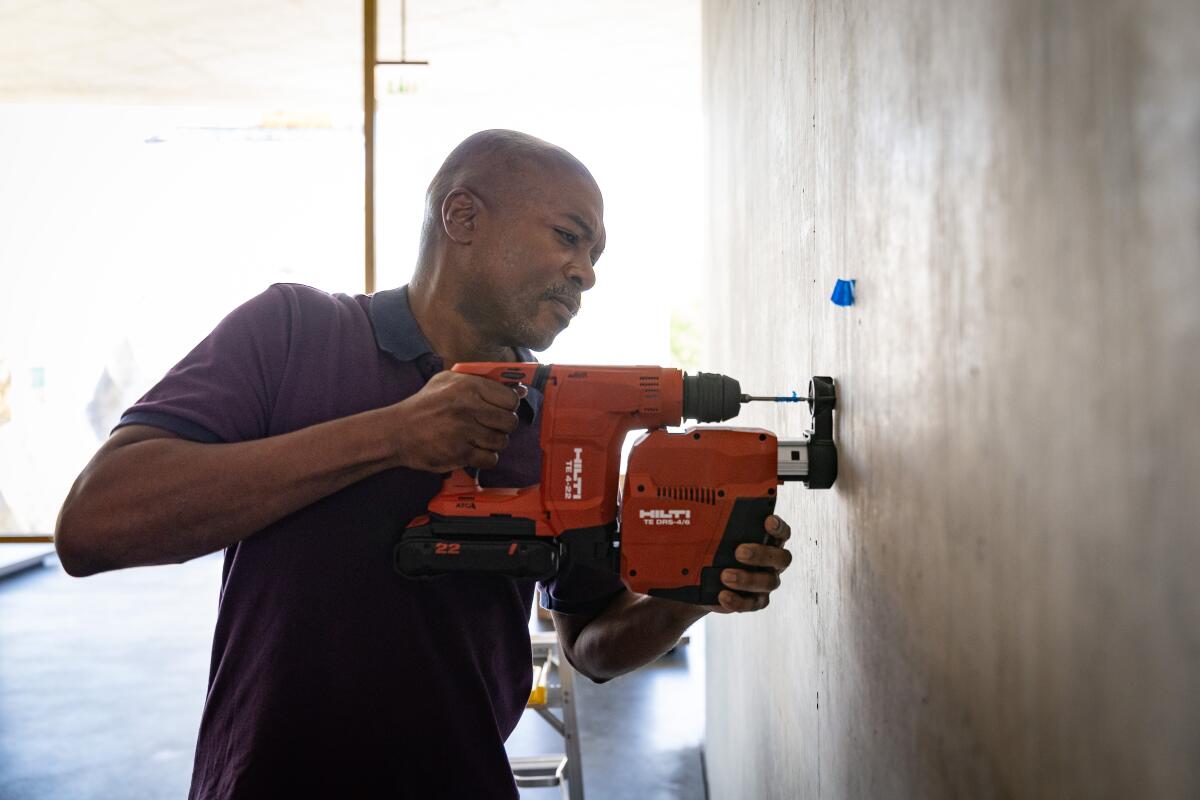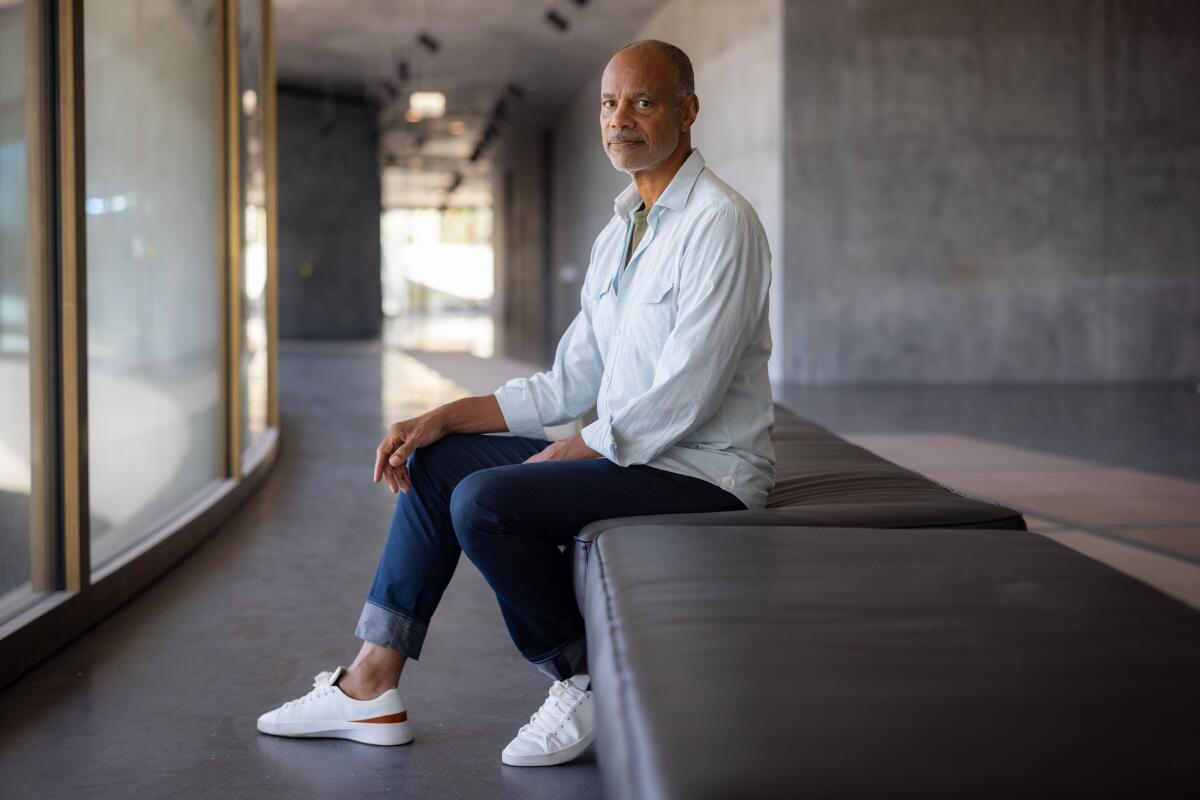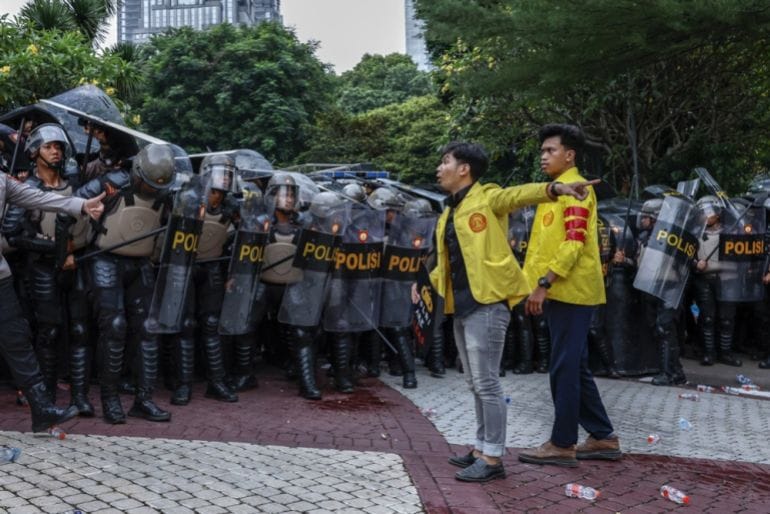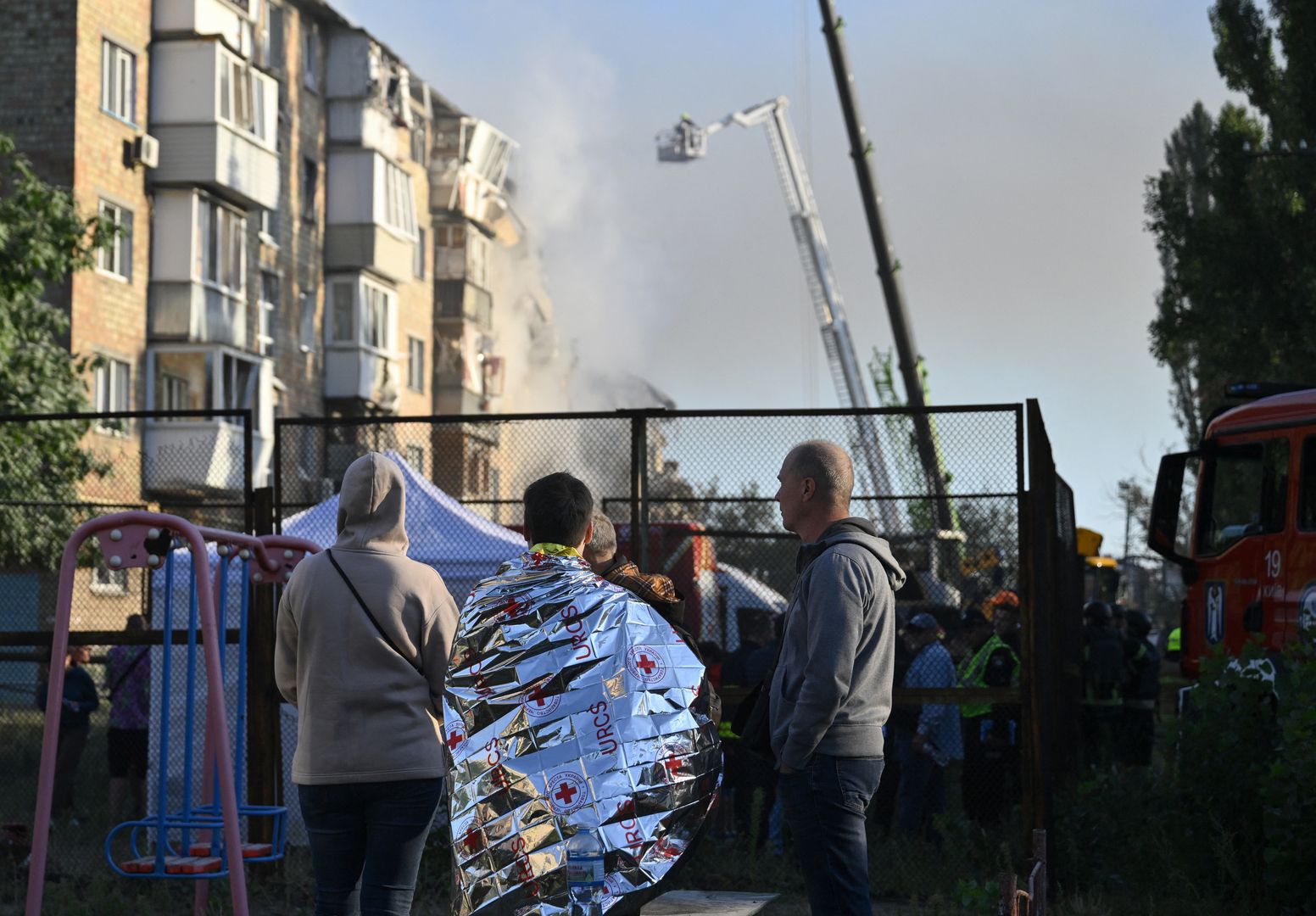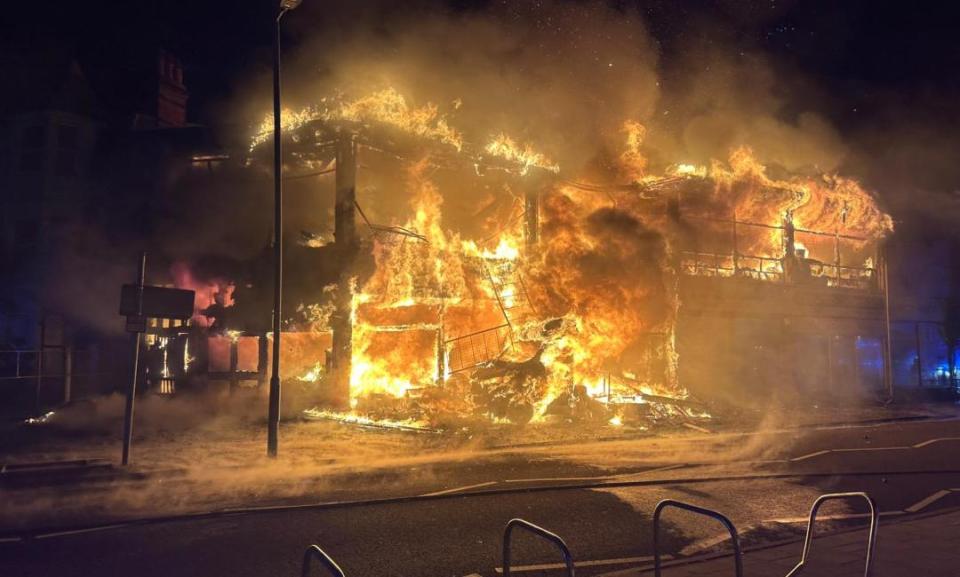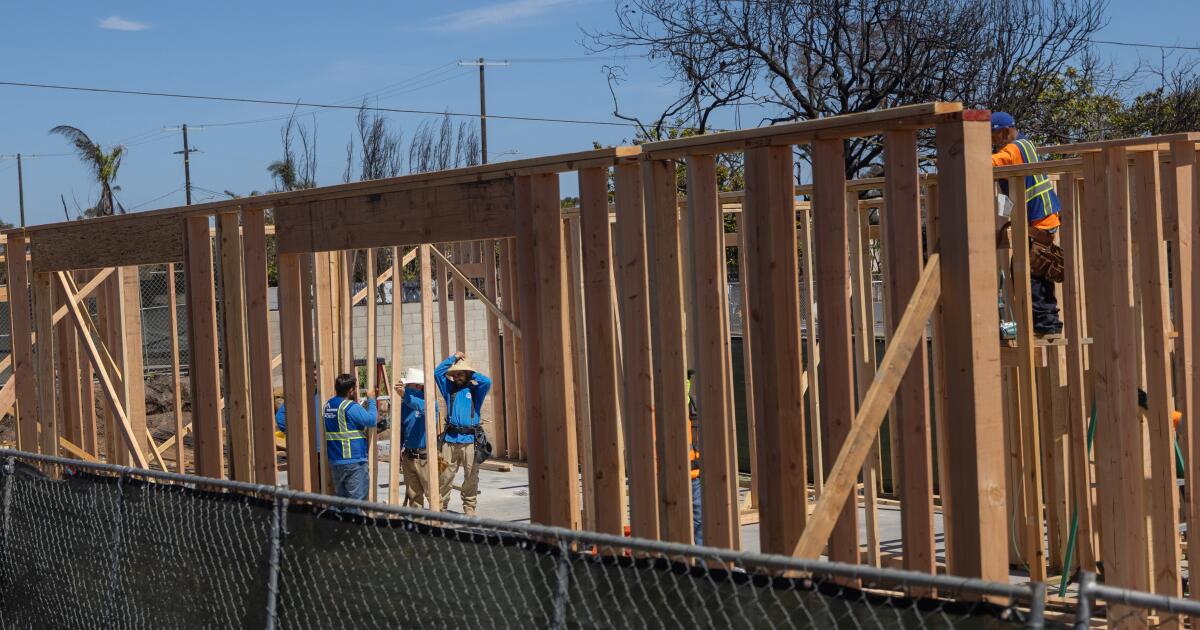U.S. Needs To Be Building Tens Of Thousands Of Shahed-136 Clones Right Now
For many years, I have highlighted in detail the threat posed by lower-end drones, ranging from off-the-shelf and standard remote-controlled types to short-range First Person View (FPV) types to much longer-range, but comparatively inexpensive one-way attack munitions that blur the lines between cruise missiles and unmanned aerial systems. Combined, these weapons represent a vast and truly game-changing asymmetric threat that the Pentagon has long overlooked. Now the Department of Defense (DoD) is desperately trying to play catch-up at a time when the evolution of these systems is fast outpacing countermeasures to them. This massive failure in vision could be heavily paid for in blood if a major conflict were to erupt between the U.S. and a capable adversary.
At the same time, the Pentagon has also been bizarrely slow at widely adopting lower-end drones for its own offensive operations. This is glaring for short-range types, especially after all the lessons learned in Ukraine. Thankfully, we are finally seeing some much-needed change in this regard. But what’s arguably even more frustrating is the DoD’s lack of urgency when it comes to producing massive numbers of long-range one-way attack drones, even now, when the need for these weapons, which have transformed modern warfare, isn’t just clear, it’s absolutely critical for deterring and, if all else fails, winning a conflict.

For our regular readers, what you are going to read isn’t exactly new. It is something we have been harping on for many years. In recent times, the lack of movement on doing everything reasonably possible to produce as many relatively inexpensive long-range attack and decoy drones borders on downright negligence when it comes to ensuring America’s national security. That being said, I have hopes the Trump administration will reverse this wrong, and there are indications from the very top that it will, but the Pentagon cannot approach it like it has done with any other weapon system in the recent past. This urgent challenge requires a more aggressive and streamlined approach that looks at the procurement of these weapons differently. There simply isn’t the time left to obtain this critical combat mass using the DoD’s ‘business as usual’ procurement playbook.
We are talking about putting in place the means to sustain rapid production of tens of thousands of these weapons a year, not hundreds or a few thousand. If the U.S. fails to do this, it hands a massive advantage to our near-peer adversaries, China and Russia, which are in far more advantageous positions to supply these capabilities in very large numbers today.
To put it bluntly, this post is not just a prediction of things to come, it is a plea for urgent action.
Attack of the clones
The drones that are so desperately needed are not complex. They are not expensive. They are anything but exquisite. They are also not innovative in any way. In fact, they take a play right out of our adversary’s playbook. They are clones of a long line of clones — that’s a huge feature, not a bug. And as a result of these attributes, they are intrinsically repulsive to the Pentagon’s legacy vision for America’s dominance in future wars.
Those making the decisions for the DoD have been dreaming up how to fight wars of the past — ones dominated by qualitative advantage. The last decade and a half or so has seen a stunted force transformation that was designed in denial of what’s on the horizon, specifically when it comes to unmanned technologies.
The same exact flavor of apathy and lack of vision within the DoD that has been occurring toward long-range one-way attack munitions was present in the last decade with the much higher-end, opposite end of the future unmanned air war. You can read about this bizarre reality in our 2016 exposé on a capability — unmanned combat air vehicles (UCAVs) — that remains an obvious hole in America’s aerial force mix as our adversaries and some allies alike pursue it with urgency.

Not surprisingly, these polar opposites in terms of deferred unmanned aircraft capabilities have one thing in common — a massive premium put on range. The decision not to aggressively procure high-end unmanned combat aircraft in the last decade was a luxury that no longer exists, but doing so with the lower end of the drone spectrum is arguably even a bigger mistake today.
A loose vision of what we so desperately need is already being mass-produced in Russia today. It is also Moscow’s primary standoff weapon with which it bombards Ukraine on a daily basis. This is the Shahed-136 — renamed Geran in Russia — long-range one-way attack munition.
This weapon was ‘designed’ by Iran, who loosely cloned it from Israel, which largely originated the development and operational use of this type of capability decades ago, a reality which you can read all about here. Today, Russia is producing thousands of ever-improving variants and derivatives of the Shahed-136 per month. That production is set to expand drastically in the near term. It is very possible that 2026 could see Russia build over 50,000 of these drones annually. The basic Shahed concept has also been copied by other countries in recent years, from China to North Korea, as well as some U.S. allies.

The Shahed-136 is an efficient delta planform, modified flying-wing-like design. It can carry plenty of fuel to get to its destination, roughly around 1,000 miles away, give or take a couple of hundred miles, as the range varies quite dramatically depending on the sub-variant. It measures around eight feet wide by 11 feet long. It delivers a roughly 50-to-100-pound warhead. It does this at plodding light aircraft speeds with the use of a small and simple internal combustion engine. The basic engine/airframe combination is intrinsically adaptable. While primarily a ‘kamikaze drone,’ it can be viewed simply as a platform. Development of improved configurations and ones capable of tackling emerging mission sets is done in a low-cost and high-risk, rapid iterative manner, not over years of development and prolonged procurement processes. The Russians have been steadily evolving their Shahed variants in exactly this way.
As noted earlier, the Shahed-136, and many other types with a similar mission, blur the line between cruise missiles and drones. This often frustrates those who obsess over definitions and designations. The fact is, you can look at these weapons as slow, low-cost cruise missiles or long-range drones that are designed, at least primarily, to fly a single, one-way suicidal mission. It is worth noting that some variants can be reused under various circumstances when used for non-strike missions.

While there are many drone configurations that could do this job, from traditional fuselage-and-wing combinations to more exotic ones, the delta planform design has proven itself as something of a sweet spot for similar drone performance capabilities dating back many decades. That being said, any airframe design that can be built as cheaply as possible and can achieve very basic range and payload objectives will work.
When it comes to this class of drone, speed and advanced guidance concepts do not define its utility. Range and cost do. Survivability comes in numbers, and due to their smaller size, use of composite materials, and small internal combustion engine, as well as their slow speed. These attributes, along with their low-altitude flight profile, mean they possess a reduced signature and general level of detectability that can be a challenge for traditionally configured ground-based radars. Despite their smaller signature, the fact that they are still somewhat vulnerable to interception is actually a positive, but we will get to that in a moment.
Above all else, the Shahed-136 and other long-range one-way attack drones exist to put a relevantly-sized warhead on a target far from their launch position at the lowest possible cost. It was previously estimated that the Russian Shahed-136 variant costs around $50,000 per copy, with some estimates being far lower. This cost has also likely declined significantly since Russia has mastered the design and drastically ramped up serial production. By comparison, traditional cruise missiles with similar range have costs in the millions of dollars per round, so the price differential is very dramatic. The Shaheds are also just far easier to build and can be produced in much less time than a typical cruise missile.

Go big or choose to lose
Before we continue, it’s absolutely crucial that if you take away anything from this piece, it’s that the U.S. military needs to acquire many long-range one-way attack munitions very fast. The basic framework for doing so that I lay out below is not the only way to realize that goal, although I believe it is, by far, the best way to do so. Regardless, the DoD must act now, and at dramatic scale, to stockpile as many of these weapons as possible in the near term.
The Shahed-136 was developed by Iran with, ironically considering its roots, Israel in mind as a primary target. Russia has tweaked their versions for range and payload optimization dictated by the conflict it is in with Ukraine — and for a potential future broader European fight by default. The U.S. military needs a drone to meet similar requirements, but it also needs another, less numerous type that is better suited for the extreme challenges of the Pacific. Critical to the latter design would be the objective of having the range to reach from the Second Island Chain to the Chinese mainland — this is roughly 2,000 miles one-way.
Having two variants, one that can reach around 1,000 miles and one that can reach over 2,000 miles, provides maximum tactical unpredictability and theater optimization. This addresses the extreme challenges of a Pacific contingency while also providing a more prevalent and efficient type for potential wars anywhere, including the Pacific.
Considering the shorter-range variant can be launched from any ship that can hold a shipping container, or that those containers can be placed on any landmass and even be activated remotely, the enemy has no way of targeting them at scale. These drones can also be launched by a small catapult or even from a moving truck bed. Air launch is also an interesting concept to ponder. Because they can be launched from pretty much anywhere, the drones can approach the enemy from every vector accessible to the launching force.

The smaller, cheaper, far more prevalent of the two ‘U.S. Shahed’ configurations can be just as useful for posing a threat to China virtually everywhere within the First Island Chain and out to 1,000 miles from Chinese shores as it would be in Europe. The larger, more expensive 2,000-plus-mile configuration is less flexible, but it’s so important because it provides an even greater targeting problem to the adversary, and extra ‘left of launch’ survivability via the sheer distance it can attack from. Its utility would be highly important in a scenario where accessing anywhere within 1,000 miles of the Chinese mainland becomes highly dangerous after the opening shots of a conflict, making resupply and distribution of additional shorter-ranged one-way attack munitions to areas within that bubble very problematic.
It’s also worth noting that the range of these drones can be consumed by flying circuitous routes to maximize survivability or to assist in coordinated attack operations with other standoff munitions and crewed platforms. Regardless, the existence of many thousands of these drones packed in non-assuming containers ready to fire, or in ships’ holds, or storehouses with a catapult nearby, and forward positioned across a vast battlespace, will demand that the enemy’s available defenses be distributed beyond their capacity to defend.

So, to sum this up, the U.S. military needs two classes of long-range one-way attack munitions and, for at least by far the most prevalent one, cloning the Shahed-136 will do. While an infinite number of configurations from different suppliers could fill those two requirements, going that route only lessens the ability to produce, stockpile, maintain, and employ the extreme quantities required. This is why two standardized configurations are absolutely key. Making such weapons is easy and by no means requires the expertise of huge defense contractors. Quite the opposite. Producing them and stockpiling them in bulk is where the biggest opportunities and challenges lie for the United States.
A new way
When I say stockpile, I don’t think it’s intuitive to visualize the scale of such an operation that is required. While the Pentagon is now slowly trying to pivot to a high-low mix of some classes of standoff munitions, with the lower end of that spectrum also being focused on the ability to rapidly produce them on demand, it is very debatable that this concept will meet expectations. This is especially true during a wartime scenario when the possibility of massive disruptions in global supply chains and even within the homeland will be part of a near-peer enemy’s battle strategy.
Yes, in a major all-out fight in the Pacific, the war will come home to the United States, too.
This could manifest in the form of some very concerning cyber weaponry China has amassed, as well as potential sabotage and kinetic operations targeted at degrading America’s ability to respond militarily and its citizens’ will to support such a response. Defense production will be among the top targets, as well as military assets. Transportation, energy, and financial infrastructure are also likely to be in the crosshairs.
Just look at what happened in Russia and Iran when it comes to near-field attacks inside their countries with adversaries using relatively basic drones and other short-ranged guided weaponry. These were precisely the kind of potential attacks we have been predicting for many years, right down to the very details. As it sits now, there are no robust domestic defenses in the United States against these kinds of enemy actions. This is another byproduct of the U.S. government’s massive lapse in not taking the drone threat seriously. This appears to be changing now, hopefully. Regardless, these are just one set of tactics, but China has clearly dreamed up many. While we can hope the words I am writing here prove to be hyperbolic and that things don’t actually occur this way should a U.S.-China fight come to pass, that is a massive ‘divorced from the facts’ gamble that nobody should be willing to take at this point.
China is also the industrial production powerhouse of the globe. It can produce things at truly massive scales to a degree the United States can’t really replicate. This is especially true when it comes to relatively long-range one-way attack drones. Famously, the first time Ukraine used such systems on Russia, they were drone airframes available on Alibaba converted into weapons. The possibility of how many of these systems China could pump out on short order presents a very dark picture when compared with America’s industrial capacity, as well as its available air defense capabilities to counter throngs of Chinese drones.
So yeah, we are far behind in the rapid production capacity realm, and especially when it comes to cheap composite airframes, basic flight control systems, and small and relatively crude internal combustion engines. So instead of living in denial, let’s work around the problem while growing production capacity in the United States. We can do this by building many of these airframes and their basic subsystem components now, in peacetime, so we have a deep, widely distributed, and resilient magazine to rapidly draw from in wartime. This, paired with the ability to scale up production during a time of crisis to counter the massive use rate of these weapons in the early days and weeks of the conflict, will be key. Initially obtaining a shallow stockpile with the hopes that production can be scaled to deal with a crisis is a very risky and foolish strategy for such a critical capability.
What the U.S. needs to do right now is an industrial push to use many contractors to mass produce the same two basic airframe designs, and the flight control systems and powerplants needed to make them fly. It is critical that the U.S. government owns the rights to the basic designs so that it isn’t ‘vendor locked’ to a single contractor. This way, the Pentagon can openly compete every component of the common designs in perpetuity, as well as assembly, payload integration, and sustainment of the stockpile, all without being held hostage by a single contractor and lopsided licensing agreements.

Once again, these drones are just simple platforms, crude ‘open architecture’ ones by default due to their inherent simplicity. As noted earlier, Russia is taking advantage of this reality with its rapid evolution of its Shahed derivatives. What we need as fast as possible is a large stockpile of the basic components that make up a completed airframe, then we can insert payload advancements as they make sense and as tactics, countermeasures, and general technology evolve. This will allow us to achieve a proper capabilities mix that can fluctuate elastically over time.
Two standardized designs also mean launch systems and backend mission planning components can also be standardized, mass produced, trained on, distributed, and sustained at the cheapest cost.
It’s critical to note that there are a small but growing number of firms that are now actively pitching U.S.-built Shahed-like clones to the U.S. military. Spektreworks and Griffon Aerospace, for example. So far, beyond some financial assistance in prototype development, the DoD has mainly only shown interest in procuring them as threat representative targets for testing and training purposes. It’s possible that there have been orders for offensive configured types, but not at anywhere the scale needed as outlined in this post. While Shahed-like target drones are certainly badly needed, it’s a bit ironic that they want them for this use alone, because they represent a new threat that is vexing and asymmetric, but they aren’t rushing to actually obtain the same class of weapon in huge quantities for offensive use. Regardless, these firms are exactly the ones that can play a major part in bringing these two designs into service, along with other manufacturers, big and small.
With all this in mind, the plan of action needs to include finding a slew of firms with the capability and the will to produce the basic standardized airframe, propulsion, and flight controls, and build these U.S.-Shaheds as fast and as cheaply as possible. Again, this cannot be the domain of one primary manufacturer. It requires many companies. This is how the United States can achieve a highly resilient supply chain, immediate scale, and rampant competition to drive the price of each drone down over time and increase capability while piling on our combat mass. With every dollar saved via this strategy, we can buy more drones. Once we have stockpiled tens of thousands of these weapons, we can taper production strategically to keep production lines warm and work to export them to our allies.
Other companies can produce insertion payloads — anti-radiation and optical seekers, electronic warfare payloads, swarm networking communications, warheads, hardened GPS and PNT capabilities, and especially revolutionary AI infusion that will allow the use of these common airframes in innovative and outright new ways. This includes taking on missions well beyond striking static targets or acting as decoys. Cooperative swarming capabilities and mesh network deployments could all be ported into these airframes as needed.
In summary, the DoD needs to consolidate around two long-range kamikaze drone designs that it owns the intellectual property to and stockpile them very rapidly.
Striking on the cheap
The most obvious drivers for an Americanized Shahed-136, and a bigger brother to it, are the ability to hit a target at great distance cheaply and having enough weapons that can do so to sustain a fight against a major foe.
The DoD’s rush to build cheaper cruise missiles, alongside far more expensive and capable models, is one intended measure to address this reality. The fact is that in even a limited conflict with China, the target sets will be measured in the tens of thousands. A much wider conflict will see that number balloon. So the U.S. military needs weapons that can put many thousands of targets at risk without rapidly consuming all of its multi-million-dollar cruise and ballistic missiles or putting its aircraft at much higher risk by requiring them to make closer proximity or even direct attacks because stockpiles of long-range standoff weapons are depleted. The fact that these weapons require a small logistical footprint with small groups of minimally-trained personnel able to deploy them, and that they don’t depend on a host delivery system, such as an aircraft or ship, to get them to their launch points are massive added bonuses.

As we noted earlier, as it sits now, the DoD’s hope for less expensive and faster-to-produce cruise missile options is palpable, but still unproven. These weapons will still cost hundreds of thousands of dollars — far cheaper than current options, but still not exactly dirt cheap, even when built at scale. We need a much lower-end option for the standoff munitions arsenal to complement these new lower-cost missiles, and that’s where the two classes of standardized one-way attack munitions come in. Additionally, they will possess far greater range than these lower-cost cruise missiles. They can also be stockpiled with far less sustainment demands and can be produced much faster and easier during an actual crisis. Just their forward presence by the thousands in a theater would act as a major deterrent against aggression.
It seems that the U.S. military has bet on any future war being quick and very violent, but that line of strategic thinking is extremely optimistic at this point, and it borders on outright hubris. Some would argue that it is unlikely in the China scenario. So we must prepare for much longer, sustained operations. Procuring the cheapest and easiest to build long-range strike weapons and stockpiling them en masse is a critical hedge against less convenient conflict timelines.
Effector depletion — a modern battle of attrition
The massive need for this critical capability goes beyond just putting tens of thousands of targets at risk over great distances on the cheap. That is the baseline threat the drones provide to the adversary. The byproduct of it is that, to the enemy, these weapons, whether they are decoys or armed with high-explosive warheads, need to be shot down before they reach a potential target. As a result, the attritable combat mass they provide gives them a secondary role — or it can even be considered a primary one, depending on the circumstances — to consume massive amounts of expensive and hard to quickly replace counter-air weapons. These include surface-to-air and air-to-air missiles primarily, as well as counter-drone loitering munitions.
Each combatant’s stockpile of kinetic counter-air effectors is relatively finite in the short term. These weapons are generally very costly, filled with complex proprietary components, and take a long time to procure. The faster you degrade the enemy’s stockpile of these effectors, the better off you are. This impacts everything, from the enemy’s resource allocation in peacetime to the downstream effects of enhancing the survivability of friendly platforms participating in an air war to making potential targets more vulnerable to attack. Being on the right side of the cost ‘exchange rate’ is critical here. The enemy using multi-million-dollar hard-to-replace interceptors to down $50,000 easy-to-replace drones is a win in many circumstances.
The cold, hard truth of America’s and its allies’ stockpiles of advanced interceptors has been all too clearly highlighted by the war in Ukraine. The U.S. and its NATO allies are scrambling to produce more interceptors, not just to replace those Ukraine has consumed, and for the U.S., those used up in actions in the Middle East, but also because it’s clear they do not have enough stockpiled for future fights. These contingencies will include facing thousands of enemy drones just like the Shahed-136, which will chew through effector reserves at an alarming rate.
China is not immune to this issue either, although they have a far larger industrial capacity and more government control over it to stockpile weapons and replenish them quickly, if needed. Still, during major conflict, especially a fast-developing and extremely violent one, the consumption rate will vastly outpace any production rate.

So, for examples of American Shaheds that never make it to their targets, if they are even intended to hit targets at all, their deaths at the hand of anything but a specific set of very short-range enemy point defense systems, could be considered a win — one that, collectively, could very well be critical to succeeding in a conflict over the long term.
Let’s talk about that short-range air defense caveat for a moment. The mainstream media has painted a picture that directed energy weapons — lasers and high-power microwave systems specifically — are the antidote to low-cost, but effective aerial attack drones. Today, these directed energy systems are still in their infancy, and delays in development and fielding have put many predictions of them dominating the battlefield in the near term in check. Regardless, these are very short-range systems with major operational limitations, even when they work as advertised. They are meant to protect a small area or a large facility at short distances measured in single miles, at best. The same can be said for gun and guided rocket counter-drone systems.
For high-value targets, these short-range protection measures can play a major defensive role, but they are far too costly to deploy over large areas. Even when used to defend high-value targets, they are a last line of defense, not a panacea for long-range one-way attack drones and other standoff munitions. In order to rely on them solely, the party being attacked has to be willing to let very dangerous weapons get within extremely close proximity of their most valued assets — ones that could be attacked en masse in an attempt to overwhelm these kinds of point defenses. So yes, they are a critical layer of defense under certain circumstances, and their role will grow as their capabilities do, but they are in no way an antidote for the long-range one-way attack drone threat.
Electronic warfare has its own limitations, including its reach, depending on the tactic being deployed. In order to act as an effector-consuming target, a one-way attack drone could rely on nothing that could be impacted by traditional electronic warfare. This includes just flying on a heading once entering into GPS-disrupted areas or working off of onboard inertial navigation system (INS) guidance alone, if it’s so equipped. Remember, the drone doesn’t even have to end up at a specific target for it to consume an effector. The enemy doesn’t know if it has a warhead or an advanced navigation system or not, nor what its target is. For basic missions, they do not need to be equipped to communicate, so jamming communications is not a viable vector of electronic attack, either.
Modern positioning, navigation, and timing (PNT) technologies will only improve upon this resilience to electronic warfare, even for those drones configured to strike with precision. Basic infusion of artificial intelligence (AI) is fast approaching over the horizon for lower-end drones, which will enable adaptive autonomous navigation without GPS and strikes even on mobile targets of opportunity. Again, you can read all about this in our previous feature linked here. Electronic warfare will not be able to impact these systems.
The key takeaway is that having tens of thousands of real threats that cost a fraction of the price of a standard cruise or ballistic missile, ready to gobble up precious air defense effectors, will be an absolutely critical factor in any major future conflict.
The enemy is also fully aware of this vulnerability and tactical opportunity, too, but that’s another post entirely.
Starting tomorrow is too late
Rapidly amassing a fleet of two types of relatively crude long-range, expendable drones seems remarkably simple for a country that builds stealth bombers and reusable rockets. The good news is that this isn’t technically wrong. What’s missing is the strategic vision and the urgency to actually do it. The fact that I am even having to write this about a weapon that has already changed modern warfare and is being used by the thousands every month in an active war in Europe certainly is as troubling as it is outright strange.
There is absolutely nothing sexy or innovative about any of this. This is borrowing and scaling, not innovating and slowly iterating. In simple terms, it is everything the Pentagon isn’t known for, regardless of its leadership’s constant messaging on needing to change the way they do procurement and ‘move fast.’ You can look at the scope of the Biden administration’s Replicator initiative to get an idea of just how out of touch the powers that be were when it comes to needing a huge infusion of combat mass ‘yesterday.’
Then again, we are at an inflection point. The picture isn’t pretty when it comes to the United States facing off with China, especially at the same time Russia’s war machine is being spun into high gear and poses an increasing threat to Europe, and other hot spots around the globe burn ever brighter. The good news is that we are seeing some promising signs within the DoD that this reality is sinking in that the need for change isn’t some nebulous goal for generals to pine about in future tenses.
Two types of relatively simple and adaptable long-range, expendable drones, built at scale by multiple companies, big and small. No, it’s not that much of an ask, is it?
So let’s do it.
Waiting for tomorrow is now too late.
Contact the author: [email protected]


